| | By B. Scott Mohr Associate editor The stunning craftsmanship of woodcarvers from Circle City Carvers and the Midwest will be displayed when the group hosts a judged show and sale Saturday. Among those exhibiting their work from 9 a.m.-4 p.m. at the Life Center at Southport, 4002 E. Southport Road, will be Jeanne Johnson, 87, who picked up some carving tools more than 50 years ago to create a Nativity scene because she could not afford the one she wanted. “It turned out OK, but I painted it, and I did not like the paint,” said Johnson, who noted that the work of some club members is on display at Southport Library. “I’m not fond of painted wood. I like its natural color. I made a second one and went into more detail and didn’t paint it. My oldest daughter, Joy Ross, has the first one.” She has crafted about five such scenes over the years; each of her three children has one, as do a nephew and niece. “The kids cherish them.” Her largest project was a cherry dining room table and six chairs. She has made a smoking cabinet, a shelf and a 3-foot tall Madonna – which she is trying to sell – that was displayed 17 years at The Children’s Museum of Indianapolis before it came back into her possession. Johnson also likes to carve ducks, crosses, friendship spoons and all kinds of animals. “I like to give the friendship spoons as gifts on special occasions. The ducks are time-consuming projects and can require 10 or more hours. “A good bit of my work is done with knives, but I do use some power tools because they are a lot quicker and don’t require any strength,” said the Southport resident, who uses basswood (it’s easy to work with) cherry and walnut. “I’m trying to get some stuff done for this show, but my yard also needs a lot of my time. When my daughter used to live in town, she would help. But she has moved away.” Johnson, secretary of Circle City Carvers, grew up in a suburb of Cleveland and was one of the first women to earn a degree in chemical engineering from Ohio State. “Because I was a woman, I didn’t get many chances. I worked at a lot of different companies. That’s the way it was. But I don’t dwell on the past. I’m glad I live in Southport. I like it here, and I feel safe.” Equally adept is Ron Kern, a 61-year-old retiree from IBM who created his first piece – a small carved ball inside an “open-air box” whose sides were spindles – when he was about 8. “I got the idea when I saw a shoe box full of whittled items at a farm auction. I was intrigued by the ball inside the box. We couldn’t afford it, but something triggered me to make one just like it.” Kern, club treasurer, said he shies away from traditional carvings to focus on unique creations, such as an intricate floral piece that is far from being done, a full-size bust and a deer antler. He likes to use walnut because it’s beautiful and carvable, and he loves linden because it has no grain pattern and is light cream white. Good wood can be purchased at a quality woodworking store. As a reminder of his fishing trips to Canada, he crafted a loon. When it comes to carving and his tools of preference, Kern uses “what it takes to get the wood off.” He also repairs the frames of antique clocks and is using hand tools to restore the entryway at the Scottish Rite Cathedral. “I like to be busy with my hands,” said Kern, whose time is also occupied by leatherworking and silversmithing. While the interest in carving rises and falls among adults, Kern said there is a noticeable jump in interest at the youth level. He reasons that students are gravitating toward the craft because industrial arts classes are no longer offered at high schools. A beginner can get started for under $30. Duncan Fugate, vice president of the club, prefers to use hammers, chisels, gouges, knives and finishing utensils to create mythological figurines such as dragons and gargoyles. He said the craft is divided into three categories: carving in the round (mostly statues), relief carving (a block or board is used and the carver works his way up) and chip carving, which is done on a flat surface and features geometric and intricate shapes; it can be complex. Some works are left their original color, others feature striking paint schemes. Choosing the appropriate wood can depend on many factors. Is the wood soft enough to cut easily with a chip-carving knife, or is a chisel and mallet needed? Will it have a natural finish that shows the grain, or will it be painted? Some carvers choose interestingly shaped sticks or logs. A freshly cut log can present problems since it contains a great deal of moisture. If the log dries too quickly, it may crack badly. It is best to let the log air dry until it reaches an acceptable level of moisture content to prevent unwanted cracking. The alternative is to purchase kiln-dried wood that has been cut into boards. For carving ducks, shorebird decoys and similar figurines, basswood is an excellent choice because it is soft. The close grain holds small carved details, and there are few knots or blemishes. However, the wood’s softness makes it difficult to apply a stain evenly on carved surfaces or attain a glossy finish. Most basswood carvings are painted. For sculptures with a natural wood finish, walnut, mahogany or cherry provide rich color with an attractive grain pattern. All are moderately difficult to carve because of their dense grain. For fine work, sycamore, maple, apple, pear and plum are usually chosen. |
|
0 Comments
Leave a Reply. |
Archives
July 2024
Categories
All
|

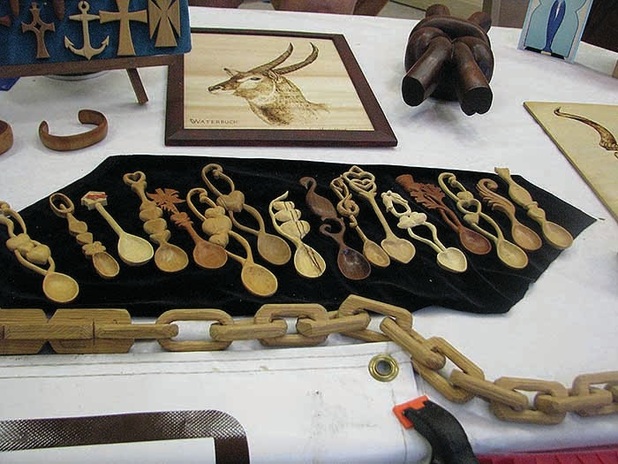
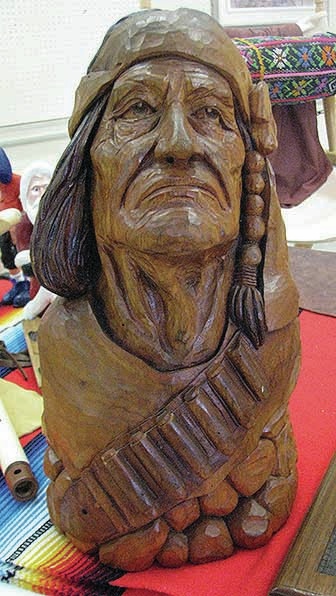
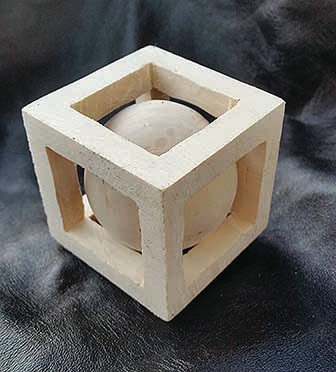
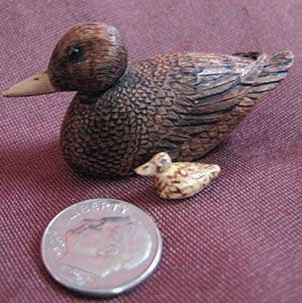
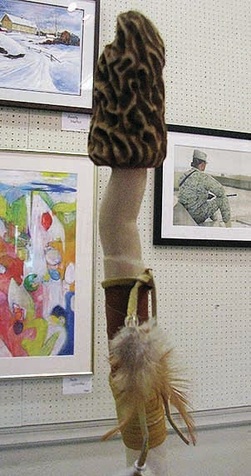
 RSS Feed
RSS Feed